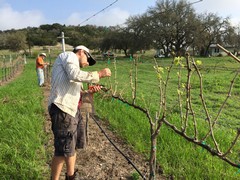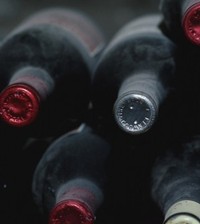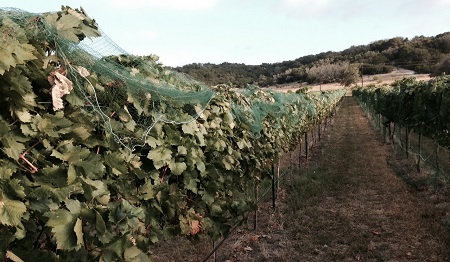Kuhlman Cellars Blog
What's to Know About Pink Wine? A History of Provence
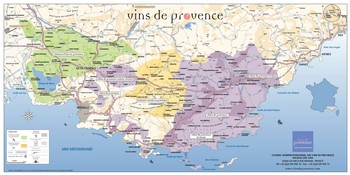
The Côte d'Azur smells of perfumed wild flowers, savory herbs, mountain Mistral wind, and Mediterranean shells by the blue coast. Rewind the image to 26 centuries past, as the Greeks are colonizing Massalia (modern day Marseille) an old Ligurian province, around 600 BC. The Greeks bring a wine culture to the area, and by the 4th century BC it was already a major trade post and port, exporting local salted pork, fish, coral, wines, cork, and medicinal and aromatic herbs and plants between the Roman Republic and Gallic France, and traders would follow the Atlantic to the British Isles, and up rivers like the Rhone to trade with Burgundy, Switzerland and as far as the Baltic Sea. In order to protect trade route commodities from incursion from Etruscans, Carthaginians and Celts, by the 1st century BC, the communities of Nice, Arles, Cannes and Marseille had allied themselves to the Republic, becoming the first Roman province outside of Italy, and the area became known as Provincia Romana, dubbed "provincia nostra" ("our province") from which the current name for Provence is derived.
The wines of Provence in antiquity were fresh, light, exuberant, and pale in color, as the juice of the grapes was quickly removed from the skins immediately after harvest, allowing for but a very short maceration (grape skin to juice contact) before fermentation. Long maceration times were practiced on a limited basis, and possibly used for tonics, tinctures, or aromatized infusions, much in line with ancient Roman traditions (think bitter Amaros and Vermouth). It is also known that ancient cultures have practiced polyculture (white/black grapes co-harvested and co-fermented at the same time) in their vineyards, a way of blending wine via the vineyard field blend, and thus increasing the chances of pale colored wines.
Provence benefited of fame for the quality of their wines across of Julius Caesar's Republic, but it's not until 8 BC that Provence becomes really Romanized under Augustus, building aqueducts, arenas, fora, villas, baths, theatres, monuments, and roadways, now spanning from Hispania's Pyrenees to the Ligurian Alps, now part of the Roman Empire. However, it is after this time from the 3rd to the 5th century and beyond that the propagation of vines via the monastic orders would catapult, as they would make wine not only for the service and sacrament, but also the sale and export of wine to fill the coffers of their monastic establishments, and build regional wealth that would catapult Provence to the highest courts.
By 880 Provence had become an independent County, and in spite of neighboring political conflict, the wines of the region remained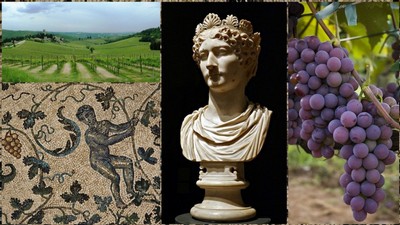 sought after, and well received along all the lines of extraordinary aristocrats; duchies, and dynasties. The Nobility was the best ancient class of "marketing" as ambassadors, courtiers, and emissaries would often refer to wines from their travels and visits to foreign realms, as royalty does, the rest follow. The wines of Provence gain even further acclaim in the 14th century, as the reign of the French Papacy seats in Avignon, then in the Holy Roman Empire, and as the most important noble families, honored royal subjects, and top officers of the royal armies would acquire and oversee many vineyards in Provence, establishing the foundations for modern wine production in the region. It's not until the late 15th century that Provence legally becomes part of the Kingdom of France, and thrived under the Ancien Régime throughout the Middle Ages. Provence saw its share of trouble during the Napoleonic Campaigns in the post-revolutionary period, as it remained largely royalist. By the 19th century the port of Marseille was monumental in maintaining the French relations with new Franco-African colonies, and in fact, to import wine from Algeria notably, back to France during the plight of Phylloxera that ravaged European vineyards.
sought after, and well received along all the lines of extraordinary aristocrats; duchies, and dynasties. The Nobility was the best ancient class of "marketing" as ambassadors, courtiers, and emissaries would often refer to wines from their travels and visits to foreign realms, as royalty does, the rest follow. The wines of Provence gain even further acclaim in the 14th century, as the reign of the French Papacy seats in Avignon, then in the Holy Roman Empire, and as the most important noble families, honored royal subjects, and top officers of the royal armies would acquire and oversee many vineyards in Provence, establishing the foundations for modern wine production in the region. It's not until the late 15th century that Provence legally becomes part of the Kingdom of France, and thrived under the Ancien Régime throughout the Middle Ages. Provence saw its share of trouble during the Napoleonic Campaigns in the post-revolutionary period, as it remained largely royalist. By the 19th century the port of Marseille was monumental in maintaining the French relations with new Franco-African colonies, and in fact, to import wine from Algeria notably, back to France during the plight of Phylloxera that ravaged European vineyards.
In modern times, unlike all the other regions of the French Republic, Provence's wine production remains roughly about 80% rosé, with 14% red and 6% white. As in ancestral times, the wines are pale gray-pink (sometimes referred to as vin gris) and raging from melon, peach, mandarin, to grapefruit pink-hues, and they retain their bright acidity, perfumed elegance, and fruity aromatics that make the style of Provençal wines a benchmark for rosé wines across the globe today. Not only was Provence prodigious in establishing a wine culture in the rest of Gaul during the Greco-Roman times, and a cast commodity in the royal and papal regimes, but also has been known for a culinary center with their fused Mediterranean cuisine of excellence.
Some of the most well known and well loved gastronomic pairings for rosé in Provence are; Salade Niçoise (tuna green salad), Bouillabaisse (fish stew), Anchoïade (anchovy paste), Escabèche (acid-vinegar marinades), Ratatouille (vegetable stew), Aïoli (garlic mayonnaise), but rosé has proven to pair well with many cheeses, charcuteries, poultry, pork, and seafood dishes, fish in general, as well as sushi, sashimi, and other international cuisines that may be more challenging to pair with white or red wines in general, like Thai/Indian and other Asian cuisines, with Peruvian and Mexican gastronomy and American pique-niques like barbecue, hot dogs, hamburgers, and pizza.
Speaking of pique-niquin' - as we dawn upon our warm Texas Summer season, rosé wines should be considered for not just cuisine 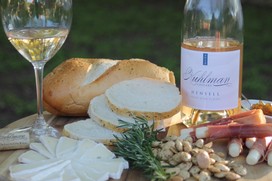
So, who says time travel doesn't exist? The time capsule is the bottle, as it preserves traditions (some of which have been extremely codified). Travel today in time, share with friends a bottle of Hensell rosé with a rustic bread, an array of cheese and cured meats, a jam preserve, and Kuhlman's signature Spanish Marcona almonds with Herbes de Provence, and reminisce of how the ancient Greeks and Romans enjoyed life by the Côte d'Azur in provincia nostra over 2000 years ago enjoying a similarly refreshing pale pink-hued wine.
Santé mes amis!
2016 Bud Break!
Hang on to your hats folks – Bud Break is upon us early in 2016.
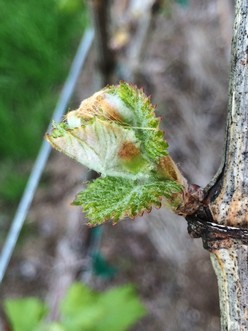
The grapes awoke early this year. This is because we had an overall mild winter, but also because we had a very warm February. Let’s put things in perspective. Our 2016 bud break was March 7. This is the earliest we have encountered at the family vineyard. And it is the earliest by a lot – last year in 2015, we didn’t achieve bud break until March 24! Bud break in 2014 and 2013 was March 21 and March 15th respectfully. Therefore, March 7 represents about 3 weeks earlier than 2015 and 1 week earlier than our previous record.
Oh boy!
So far, the weather looks promising. Though the weather isn’t up to us. Instead, we work hard to keep the vines healthy and we stay prepared to take whatever actions we can to protect those tender buds in cases of cold weather. Site selection is critically important to help defend against frost. At the family vineyard, we have nearly 2 miles of clear valley spreading out south of the vineyard along with about 200 feet of elevation drop. This allows the cold air to simply flow out of the vineyard and not settle to impact the vines.
As we progress through the growing season we look to transition from risk period to risk period. We start with frost, proceed through hail and ultimately encounter mold / fungus and proceed on to four legged and two winged pests in the form of mammals and birds who want to eat our precious fruit. We don’t breathe easy until the fruit is harvested and in the cellar!
With some fortune and very hard work, 2016 will not only see the third family vineyard harvest, but also the first at the Estate. We will see, but hopes are high and optimism strong.
Vina Vita!
Roll Out the Barrel!
What is the first thing that comes to mind when you think of a dusty old cellar beneath a Chateau in France? What is the first thing people want to see when they tour a winery? The answer for most of us would be the wine barrel. Simply put, the oak barrel is one of the single most romantic things to observe in the cellar, they are equally as beloved in regards to winemaking. Barrels act as a vessel, a membrane between the wine and the oxygen-rich air outside of the barrel. These metal-hooped, toasted bunches of oak slats, call staves, are oh-so important to the art of making fine wine. Let us take a look into the world of wine barrels, and why they are an integral tool in the cellar.
Firstly, why barrel age a wine? A wine barrel acts as a porous barrier, allowing small amounts of oxygen transfer to occur over time. This aspect of barrel aging really helps to achieve structure and marriage of flavors in a wine. Second, it is very common to obtain flavors from a new oak barrel during its first use, typically within the first year or two of a barrel’s life. After such time, the barrel becomes what we call neutral, basically meaning it imparts little flavor into the wine, but the oxidative effect and additional tannins from the wood are still very much present.
There are several regions in which we harvest oak, but the two most common would be French and American oak. Each has their own unique personality and offers different characteristics to the wine housed within them.
 American oak- Harvested from oak in the warmer climate of the United States, this type of wood has looser graining which produces more aggressive flavor profiles. Baking spices, dill, vanilla and toasty flavors are often exuded from American oak.
American oak- Harvested from oak in the warmer climate of the United States, this type of wood has looser graining which produces more aggressive flavor profiles. Baking spices, dill, vanilla and toasty flavors are often exuded from American oak.
French oak- Harvested from the cooler climate of France, this type of wood offers tighter graining which produces more gentle flavor profiles. Gentle notes of vanilla and toast can be expected from French oak.
What about tannins? In wine, tannins come from the skins, seeds (called pips), and the stems of the grape clusters. Did you know tannins also are imparted from the oak barrels? Typically we perceive phenolic tannins from the fruit on the front palate, while the tannin compounds from the oak barrels are often sensed on the back palate. Tannins in general are perceived as astringency all over the mouth, and add a ton to the structural mouth-feel of a wine.
Next time you are in a tasting room and are admiring the oak barrels, try and remember how much they add to the finished product in your glass. Let us also give a shout-out to the people that put in the time and effort that went into making a wine barrel by hand.
Vina Vita, my friends!
Better With Age?
The holidays are a time when giving and receiving can result in a nice stash of wine accumulating in your cellar. If hosting a holiday party, chances are a guest will bring a bottle of wine or Champagne as a thank you gift. Santa may deliver an intriguing bottle of your favorite varietal with a note to not open until Christmas… five years later. Rather than let your yuletide bounty of bottles sit on the kitchen counter, here are some tips for storing the gift of wine all year long.
Cellaring: Why?
Only 1% of the world’s wines are meant for “long term” storage. The other 99% is meant for consumption between immediate and up to 10 years. During that time, the way a wine is stored can help preserve the integrity of the product and encourage the long-term chemical reactions happening inside improving it with age.
Wines biggest ‘frenemy’ is Oxygen. Oxygen allows wine to ‘open’ when uncorked, allowing a wide range of aromatics and flavors to emerge. Prematurely introducing oxygen for long spans of time degrades and ‘spoils’ the wine. Wines with a high level of natural acidity help slow the oxidation process. . When you cut open an apple, the flesh begins to brown very quickly due to oxidation. Wine undergoes a similar ‘browning’. High natural acidity in wine helps slow the oxidation process much like lemon juice stops oxidation in fruit.
Tannin levels also help prevent oxidation. Tannins act like a “shock absorber” to process oxygen in a way that allows other chemical complexities to not bear the full brunt of exposure. Tannins are primarily gained from extended contact with the seeds of the grape and barrel aging. Storing wine properly allows tannin chains to be “used up” or broken, giving aged wine a softer, more nuanced body. White wines do not have the same exposure to the seeds and barrel age resulting in low tannins and a generally a poor candidate for long term storage. Try to consume white wines within three years of the date on the bottle for best results.
Cellaring: Where?
Every collector dreams of stepping into a stone-walled underground cellar lined with cedar racks nestling bottles like sleeping baby bats in a cave. Sadly, this romantic version of the perfect cellar is simply not reality for everyday urban living. A functional, practical cellar for storing wine can be incorporated into any home. These four simple rules will help save your wines from spoilage:
Find a cool place: Ideally wines should be cellared at 65 degrees. But here in Texas, following the rule of not exceeding 75 degrees is more practical. Find a spot that provides a stable temperature level and avoid wild heating and cooling fluctuations. Wines stored in excess of 80 degrees can ‘bake’ in the bottle causing heat damage.
-
Find a dark place: UV light rays are damaging to wine. Find a shaded space away from direct sunlight. Green or brown or bottles act as a UV filter, but prolonged UV exposure will harm the liquid in the bottle.
-
Bad Vibes: There are tens of thousands of complex chemical reactions happening in a single bottle of wine. Vibrations can speed up or deter these reactions from happening. Keep your wine collection away from heavy machinery like washers and driers, climate control systems and vehicles.
-
Going Sideways: Bottles should be stored on their side to maintain contact between the liquid and natural cork. Because cork is porous, it can contract when dry and allow unwanted oxygen into the bottle. For this same reason, don’t allow corks to dry out. Keep your wine in a place where fresh, humid air can maintain the natural sponginess of cork.
Navigating the Wine Aisle
One item not on the label of a bottle is how long it should be stored for. Price point can be an indicator of how long a wine can sit before consumption. The majority of wines that price under $30 are meant to be drunk within 1-5 years after the vintage date. Wines between $30 to $100 are meant to age for 5-10 years of the vintage date, though there are many exceptions. The quality of the bottle and cork can offer subtle insight as to whether the winemaker chose to invest in the longevity of the juice.
Keep in mind that long term aging is not a benchmark for quality. Many highly praised wines are not meant to age past 10-20 years; the chemical composition simply does not hold up over time. The lack of prolonged cellaring possibilities does not impact the quality of a wine consumed within its proper stored lifetime.
National magazines and wine websites often note wines with the potential for long-term storage. When looking for a wine gift (or a gift for yourself) with delayed gratification in mind, consult these resources so you can buy now and enjoy later. If you are looking to shop for local this holiday season consult The Texas Wine Journal for guidance with Texas grown and produced wines. The Journal offers ratings and descriptions compiled from a panel of professional sommeliers after tasting the wines blindly by category. You can find more information about the journal at TexasWineJournal.org. Happy Holidays and safe imbibing!
Kuhlman Wines that are expected to age:
2012 Merlot: expected to show improvement for 5+ years, assess the progress in 2017
2012 Texas Red: expected show improvement for 5+ years, assess the progress in 2017
2012 Barranca: expected to age gracefully from 5-10 years
2012 KanKar: expected to age gracefully from 5-10 years
Carignan
Carignan is a red wine grape known for producing well structured, dry red wines, yet little seems to be written 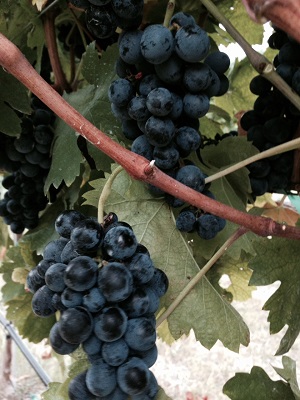 regarding this “under the radar grape”. The truth is, it has significant prominence in both the old world and new world and it is more commonly blended in everyday red wines than one might think, despite not gaining much press. Pronounced “care-in-yawn”, it is a powerful and opulent grape known for deep and concentrated color, bold tannins and high retained acidity. This is no wimpy fruit; it is structurally sound and offers tremendous presence, especially when utilized as a primary blending grape.
regarding this “under the radar grape”. The truth is, it has significant prominence in both the old world and new world and it is more commonly blended in everyday red wines than one might think, despite not gaining much press. Pronounced “care-in-yawn”, it is a powerful and opulent grape known for deep and concentrated color, bold tannins and high retained acidity. This is no wimpy fruit; it is structurally sound and offers tremendous presence, especially when utilized as a primary blending grape.
For those of you not familiar with this grape, just imagine if the well know Merlot and Syrah grapes were to mate, the best qualities of each of those varieties are similar to what Carignan showcases. The variety is presumed to be from Spain originally and is still prevalent in Catalonia, Spain. It is also well known in southern France, from the Languedoc-Roussillon region in particular. California has been growing and blending Carignan for decades and there are mature Carignan vines producing fruit in the Texas High Plains. This grape variety needs to be cultivated in relatively warm and dry climates, as it can be prone to powdery and downy mildew and requires a warm growing season to achieve proper ripeness. The vines tend to be vigorous and must be well managed to produce quality, concentrated fruit. Having said that, Texas seems like a pretty great place to grow Carignan.
At Kuhlman Cellars, we originally planted Carignan in our family experimental block in 2012. We believe this is the first planting in the Fredericksburg AVA. We also believe in its potential as a possible backbone grape for our blending family. It provides a well-balanced yet massive backbone if crop yields and vine canopy are well managed. For those of you who have tasted the 2012 Barranca, you know exactly what I mean. Wines with finesse, power and character come from these interesting blends. We also planted Carignan in our estate vineyard in the Texas Hill Country in 2015. Our largest block, Block 5, with approximately 2.3 acres of Carignan, will be producing fruit in the coming years on the Kuhlman Cellars Estate property. Our usually dry/hot summers, as well as our clay topped limestone soils in central Texas provide a suitable environment for harvests of intense, ripe fruit from our vineyards, so the future of Carignan in our wine program is exciting!
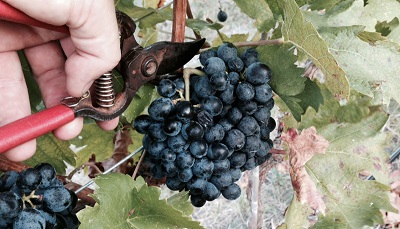
Below is a list of known Texas vineyards currently growing Carignan:
Bingham Family Vineyards- Texas High Plains
Brushy Creek Vineyards- Alvord, Texas
Buena Suerte Vineyards- Texas High Plains
Kuhlman Cellars- Texas Hill Country
La Pradera Vineyard- Texas High Plains
Martin Vineyard- Texas High Plains (believed to be the oldest Texas vines still in production)
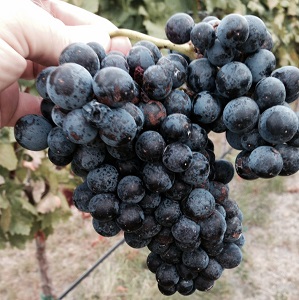
Let’s celebrate the wine life, Vina Vita, and savor everything that is… Carignan.
Cheers!
Estate Vineyard Block 2: Marsanne
For those of you who’ve recently visited the winery, you may have taken note of the new vineyard and the growing vines. With all the rain, we have a wide range of growth!
Overall at the estate, we have five different vineyard blocks ranging from just under and acre to about 2.3 acres in size. This represents 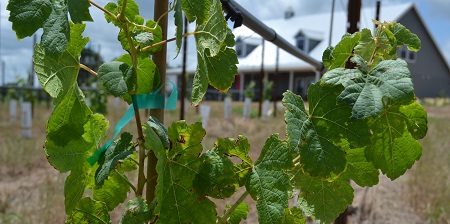
Block 2, just north of the winery building and the vineyard section you see when you first drive into the estate, is planted with Marsanne. Marsanne? This grape may be unknown to many folks, but we believe it holds good promise as we continue seeking the best varieties for our climate and soil.
So, what is Marsanne?
Marsanne is a white grape, thought to have originated near the town of Marsanne, France, located in the northern Rhone valley. While the name may not be familiar, white wines from Hermitage, St. Joseph, Crozes-Hermitage and St-Peray are often predominately Marsanne blends. In fact, Marsanne is the most widely planted white grape variety in the northern Rhone. Marsanne is also found in the southern Rhone valley, where it can be found in white Cotes du Rhone wines.
Interestingly enough, Austrailia has the most Marsanne vines in the world, accounting for about 80% of the worldwide total. Marsanne was brought there in the 1860’s and the oldest Marsanne vines in the world are found there dating back to about 1927.
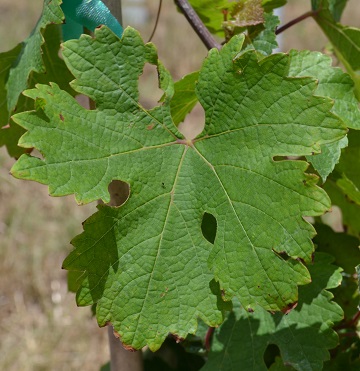 There isn’t much Marsanne yet growing in Texas. A couple of growers up in the High Plains are growing it, including VJ Reddy and Tyler Oswald. Mike McHenry has a block of Marsanne up near San Saba.
There isn’t much Marsanne yet growing in Texas. A couple of growers up in the High Plains are growing it, including VJ Reddy and Tyler Oswald. Mike McHenry has a block of Marsanne up near San Saba.
Marsanne in the Vineyard
We selected Marsanne for our estate vineyard because of the expected viticulture characteristics. It tends to bud late in the spring, typically about 11 days later than Viognier, which is important when we are dealing with spring frost events. It also tends to have less disease issues, partly due to the looser grape clusters which promotes better air circulation. It also produces wines of great character and structure, something we like when considering blending with our other white grape planted in Block 4 (and sister vine to Marsanne) – Roussanne.
So far at the estate, the vines are growing well in our clay-dominated soil over a limestone base. The rain so far has allowed the vines to grow without supplemental irrigation, a rare treat here in Texas. However, the high rainfall we’ve had this spring is causing its own challenges with standing water and disease pressure. Of course, we won’t get any fruit from these vines this year, though we might get a small sample in 2016. Look for a true harvest in 2017 with wine released perhaps in 2018.
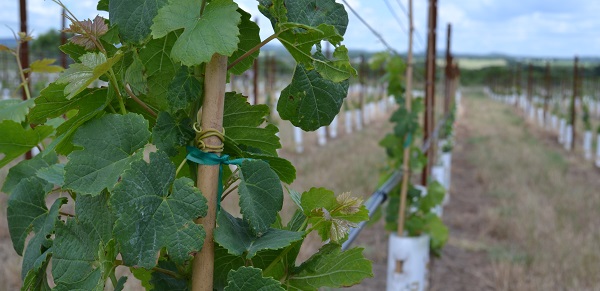
Also, feel free to come on out and walk the vineyards and look at these wonderful vines!
Texas Terroir, a brief synopsis
There are so many factors involved in producing a quality bottle of wine, as things all begin in the vineyard and make their way to the cellar. Most of us can certainly agree, weather and soil play a very important role in winemaking. What better place to discuss soil types than in the Lone Star State. Texas itself sits on a rock shelf and depending on where you live in our wonderfully enormous state, you either have a little or a whole lot of rocks in your backyard. There is a reason most central Texans construct raised gardens, it is because you can literally bend a pick axe trying to dig into the limestone and caliche. Who wants to rent a Bobcat just to plant tomatoes?
Let’s talk a little about the two largest AVA’s in Texas, and how different the soils can really be. Understand this story is not a definitive- end all lecture about the structure of Texas dirt, merely a brief explanation of some of the key differences between the soil of Central Texas, vs that of the Texas High Plains. With such a large wine style dynamic between fruit from the Hill Country vs the High Plains, there has to be something unique regarding each region right? The answer is yes, both in climate and dirt, this thing we call terroir. What is terroir exactly? Simply put, it is the all-encompassing word for wind, rain, temperature, soil, elevation, etc, of a given region. Here are some interesting facts on the two prominent regions we are discussing.
Texas Hill Country AVA:
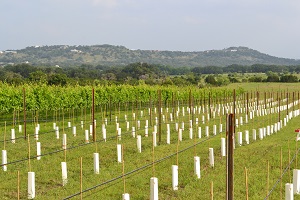
Impressively the second largest AVA in the United States, it covers 9,000,000 acres (14,063 square miles) and contains 2 sub regions; Bell Mountain AVA and Fredericksburg AVA. Elevation can range from roughly 1,000 ft MSL to over 2,500 ft MSL. The weather in central Texas is typically hot during the growing season. Hill Country daily high temperatures average in the in the mid 90’s, while the nights drop into the low 70’s. The soils vary in this region, but limestone and caliche reign. For example, the Kuhlman Cellars Estate Vineyard sits on a bedrock of Caliche with a clay topsoil. There are spots in the vineyard where the clay is only a few inches deep, you can ask our vineyard team. I cannot tell you how many vines we placed directly on white chalky rock when we planted the estate vineyard in April, 2015. It is basically “set the roots on rock, replace the soil, and wish it good luck”. Struggle little fella, struggle! The rocky terroir of central Texas is typically well draining, though the clay can cause all sorts of issues since it retains moisture. The caliche provides good mineral component to the wines made from these vineyards.
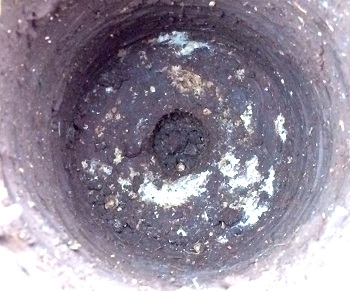
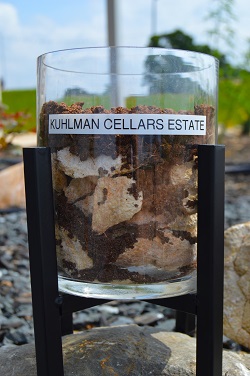
Texas High Plains AVA:
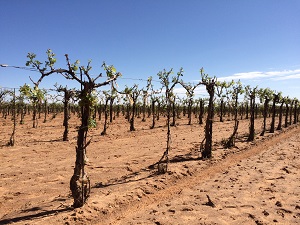
This is the second largest AVA in Texas and it also contains the most vines. It’s estimated, west Texas grows 90% of the fruit grown in the state, especially in the Brownfield/ Lubbock area. The Texas High Plains is far different from the Hill Country in a few ways, the elevation is significantly higher allowing for more of that much needed diurnal shift. Elevation in this region ranges from around 2,500 ft MSL to over 3,700 ft MSL. The soil is mainly composed of red dirt/sand with loam as well. There is quite a bit of rock in Lubbock, but it is typically buried under several feet of the famous red dirt. Sand is very well draining soil. Humidity levels here are typically very low, making the region ideal for grape growing, by reducing the incidence of fungus and molds.
In terms of temperature, the high plains tends to be slightly cooler during the days and the nights cool off into the mid to upper 60’s, providing a larger diurnal shift which helps the grapes rest and recover overnight.
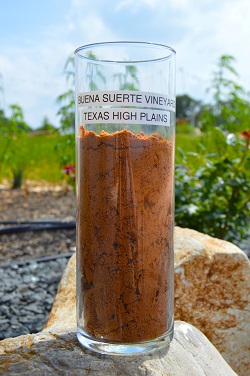
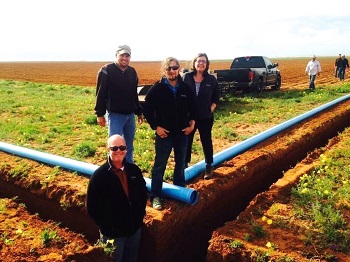
All in all Texas is a diverse place to grow grapes and to make fine wines. I hope this brief synopsis helps you to understand a bit more about our local industry and what makes our two biggest AVA’s so unique, fun and interesting.
The Speed of Wine Tasting
The other day, someone asked me how long it takes for a vineyard to produce wine.
For us, it took two years to find our family vineyard with all the appropriate physical and siting characteristics. We planted four years ago, and just this past year we took a small fruit harvest. We were so pleased last year in August 2014 to harvest that inaugural fruit! The wine currently sits in French oak barrels resting and aging. Our best guess today is the wine might be available in another 18 months. Perhaps late fall of 2016. Indeed, 7 years to produce wine!
The bottom line: there is nothing fast in growing wine! 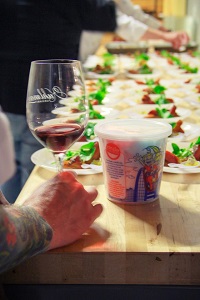
So, why do we often find ourselves in such a hurry to be tasting wine? As we rush along from place to place, person to person, task to task, and appointment to appointment, what is the rush to get through a wine tasting and race off to something else?
For us, the best wines were always the ones we've shared with friends and family, often around the dining table with food. These are the times when we relax and slow down--savoring life and the rich experiences making everything worthwhile. In our tasting room, we often talk about the Four F’s: Food, Family, Friends and the Fellowship which naturally occurs when the first three are found together.
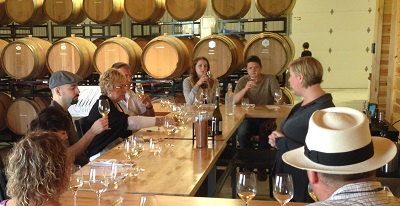
This is why our tastings are relaxed, seated experiences complete with food pairings and conversations. As Jeremy often says, “sip, savor and enjoy!” This, to us, is Vina Vita - The Wine Life!
Give us a call, come on out and visit us. Step off US290 and slow down during one of our easy paced, nearly hour long tasting experiences and enjoy our wine flight with unique chef designed food pairing bites. It's a great opportunity to taste wine at the speed of growing... enjoy!
Green Efforts
Being "green" is not just a trendy-hip thing these days. Offering mother earth a friendly helping hand is becoming a necessity as the world population steadily increases, as does our waste production both in trash, and waste water. Here at Kuhlman Cellars, being green is very much part of our daily business. Everything from the plates we serve our Chef prepared food on, to the machine we use to sanitize our tanks, they are very earth friendly. Below is a list of things we do to maintain our steady track in keeping our planet happy.
Compost bin:
As you walk from the parking lot to the tasting room, you might notice the large compartmented wooden box sitting to your left near our garden, this is the compost bin. Grass clippings, leaves, paper products, leafy greens, crackers, and fruits all go into the bin and are 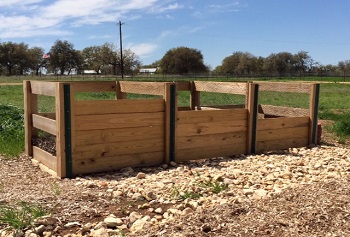
Rain capture and grey water system:
The rain gutters on the roof of the winery, as well as the drains in the cellar floor, divert water through an underground piping system to the pond located at the northeast corner of the property. This is a very low tech and efficient means of moving water. Here is a fun fact... One inch of rain captured via our rain gutter system, translates to approximately 10,000 gallons of water collected. Whoa!
The pond:
Our pond, once full, will be a peaceful retreat, an oasis if you will for guests to admire, and it will eventually offer irrigation capabilities for our vineyard, landscaping and garden.
Glass and cardboard recycling:
We simply could not call ourselves earth friendly if we did not practice good old fashioned recycling. All of the empty wine bottles, wine boxes, and basically all glass and cardboard products are recycled using two recycling centers located in both Johnson City, and Fredericksburg, TX.
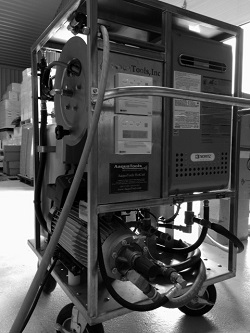
This machine is actually one of my favorite gadgets we have at the winery. Instead of using chemicals and excessive water to clean our tanks and cellar floor, we use a hot cart. This device utilizes water heated to 185 degrees and a high pressure stream to
clean and sanitize. This is not only better for the environment, but also for us humans as well.
Wine shipping boxes:
The boxes we use for shipping our wines are made in California using solar energy.
Basically, the boxes are produced using a green method, and they can also be recycled after the wine consumer receives their wine. How is that for helping out the environment?
It is a great responsibility to be gentle with our loving mother earth, all it takes are a few extra steps in the daily routine to help keep waste to a minimum. Please feel free to ask us anytime about our green habits at Kuhlman Cellars, we are always more than happy to share our practices with each and every one of you.
Cheers to Vina Vita, the wine life.
When good wine goes bad…
Dining out; I venture to guess that this innocuous phrase just evoked a passionate and well rendered memory of your last restaurant experience (for better or worse). Meticulously designed ambience, well-seasoned service professionals and carefully constructed plates of culinary artistry are elements of the dining experience leaving diners elated- or infuriated when confronted with even the slightest missteps.
A well paired bottle of wine is the great diplomat of your culinary adventure.
As wine ages it endures pubescent awkward phases, breathes and undergoes a metamorphosis in the bottle, or glass, of Kafkaesque proportions. These complex changes give us a wine experience most often rewarding, but it is not uncommon that wine presents flaws. As a consumer you should not drink ‘bad’ wine and have the right to address issues of a detectable flaw with the Sommelier, server or retailer in exchange for an unaffected bottle.
In a professional setting the server or sommelier will present the bottle prior to opening it. Check the label to ensure it matches the selection from the wine list with attention to the vintage-if it is not what you ordered, ask for an explanation. Upon opening the bottle, a small sample should be poured (1-2oz) and this is your opportunity to examine the integrity of the wine.
Listed below are several of the most common flaws:
Corked Wine
Corked wine is the most common flaw presented to consumers. As early as a decade ago it was estimated 10-15% of natural cork was affected by the presence of a compound generated by mold found growing on wood (cork trees) known as Trichloroanisole (TCA). While that percentage has improved in recent years, the problem persists. When the TCA infected cork is in contact with wine it taints the product.
How to identify: Did you sniff the cork? I’ve handled thousands of corks pulled from intensely flawed bottles only to find that cork smells like…cork. Smell the wine! When opened and in contact with Oxygen the wine will present a dank moldy smell similar to moldy wet cardboard or newspaper. The musty characteristic will be found on the palate as well and the fruit will be diminished.
Oxidized Wine
Few wines are meant for long term aging. After time, exposure to oxygen begins to degrade the juice creating a chemical breakdown. This applies to wine both opened and unopened. White wines will appear ‘orange’ in color when too old. Red wines are more conducive to age, and older red wines will take on a ‘brickish’ hue. Opened wines begin the quick descent and begin to show degradation in an average of 3 days.
How to Identify: Examine the color for hints of cloudiness or orange haze. The fruit characteristic of the wine has become unpleasantly sharp much like sucking on a penny or the taste of blood.
Heat Damage
Wine has a delicate constitution and will become flawed if not properly stored. Ideally wines should be stored between 50-60 degrees. Exposure to high temperatures can destroy the composition of a wine in as little as 15 minutes.
How to identify: Liquids expand when heated. The pressure of heated air can cause the cork to begin to push up out of the bottle creating a detectable ‘bump’ between the cork and bottle neck. The cork itself will show veins of wine staining from the bottom. The juice will take on an unpleasant ‘tangy’ note like canned or cooked fruit. It can create a heavy and one dimensional effect to the feel of the wine on the palate.
Trust your instincts, particularly when you are familiar with the wine in question. Life is simply too short to drink bad wine!
Kuhlman wines are now available at several locations in Austin, Houston and San Antonio. We thank these amazing venues for supporting Texas Agriculture and look forward to bringing wine closer to you!
Austin
Dai Due-2406 Manor Road, Austin TX. 78722
Cripple Creek & Company- 928 Main Street, Bastrop, TX 78602
www.Cripplecreekandcompany.com
San Antonio
Cured- 306 Pearl Parkway #101, San Antonio, TX 78215
Bohanan’s Prime Steak & Seafood- 219 East Houston Street, San Antonio, TX 78205
JW Marriott San Antonio Hill Country Resort & Spa- 23808 Resort Parkway, San Antonio, TX 78261
Houston
Houston Wine Merchant- 2646 S. Shepherd Dr., Houston, TX 77098
